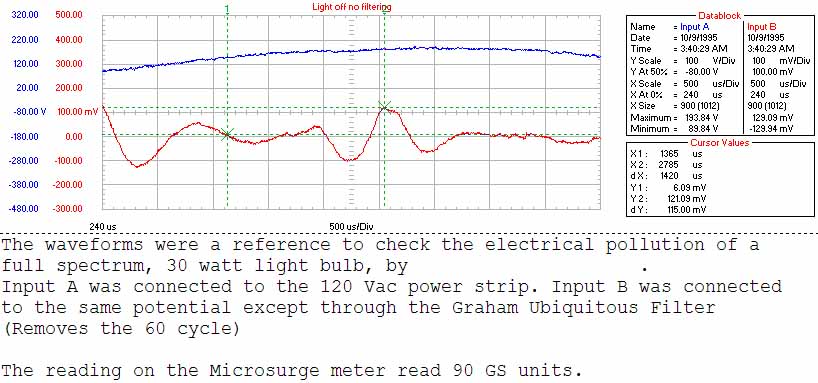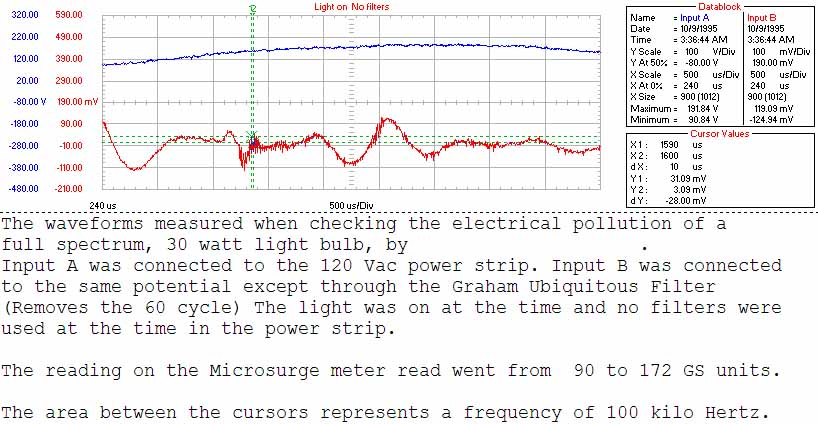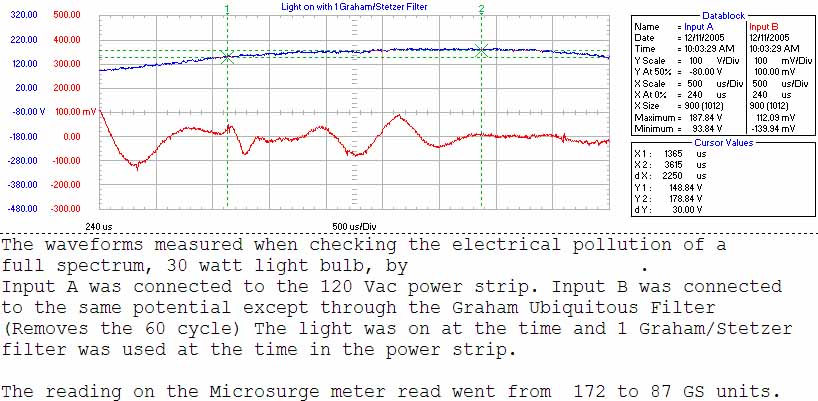
These waveforms are for a full-spectrum compact fluorescent light bulb, advertised as being beneficial to your health. The measurements below were made at the behest of staff who were required to use them for that reason and felt worse with them on.
The waveform below is a baseline waveform. The full-spectrum compact fluorescent light is NOT on. Note the Graham/Stetzer Microsurge Meter reads 90 G/S units.

The waveform below is with the full-spectrum compact fluorescent light ON. Note that the Graham/Stetzer Microsurge Meter reading has increased from 90 to 172 G/S units. Note the 100 kHz trash the lightbulb puts on the electrical wiring.

The waveform below is with the full-spectrum compact fluorescent light ON and ONE Graham/Stetzer filter plugged in. Note the Graham/Stetzer Microsurge Meter reading has decreased from 172 to 87. Note the amplitude of the high frequency trash has decreased to almost nothing, although distortion of the waveform remains.

As noted above, the use of the full-spectrum compact fluorescent bulb caused the Graham/Stetzer Microsurge Meter reading to increase. This is one way to tell if the compact fluorescent bulbs you have, full-spectrum or regular, are causing increased electrical pollution levels and therefore increased exposure to high frequencies. A simple circuit added to the bulb during the manufacturing process would largely prevent the bulb from causing electrical pollution problems. Unfortunately, the source of these bulbs was not interested in doing that, in spite of the company's supposed concern for human health.
Note: Compact fluorescent light bulbs contain mercury and need to be specially recycled either at a store that offers that service or by Clean Sweep.
Electrical Pollution Solutions Copyright © 2002
Contact the Webmaster at webmaster@electricalpollution.com
Last updated February 15, 2007